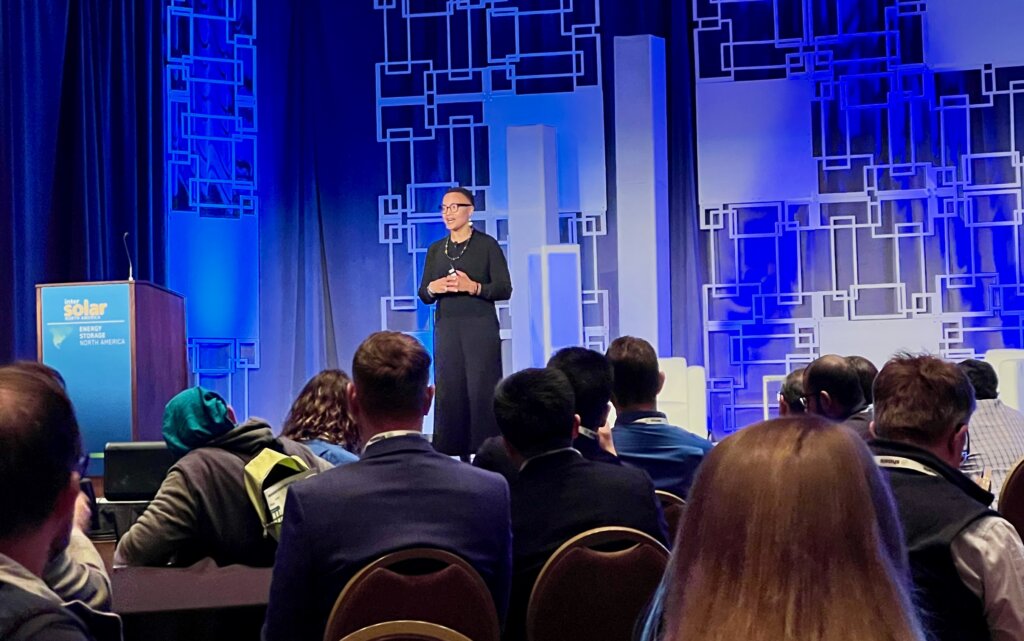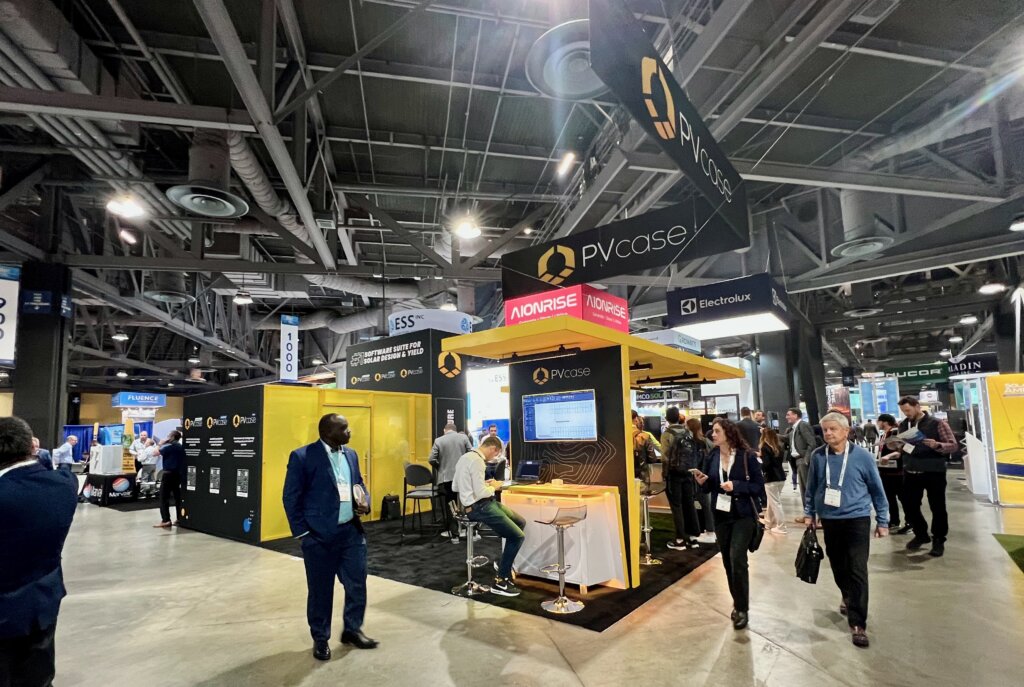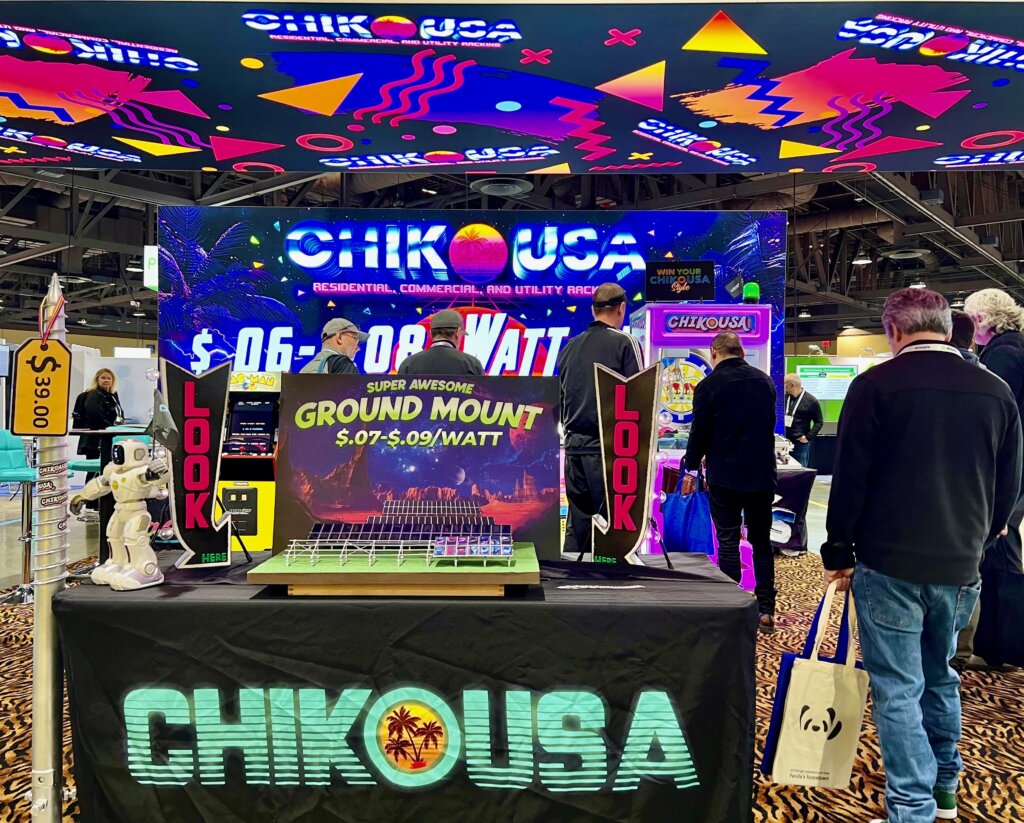Once there were two main-event tradeshows for solar power in the U.S.: Intersolar North America and Solar Power International (SPI). For much of the 2010s, they coexisted and were somewhat complementary, with Intersolar known for being more upstream all the way to production equipment vendors – with some installation and downstream companies – while SPI occupied more of the mid- and downstream parts of the sector. As the years went on, they both began to incorporate the nascent energy storage industry as well.
Intersolar took place in July in San Francisco, co-located with the well-established SEMICON West show, while SPI convened in September or October and moved around to different cities, including Long Beach (location of my first SPI in 2007), Anaheim, San Diego, Los Angeles, Chicago, Dallas (worst venue winner), Orlando and, of course, Las Vegas. The fact that the two shows took place only a couple of months apart caused much grousing among exhibiting companies.
But in the mid-2010s, Intersolar started to slip, and the balance of influence and preference moved toward SPI. Although the S.F. show had its appeal – notably the dearly missed Solar Battle of the Bands blowout party – people opted more for SPI, and Intersolar’s significance faded. The German-based Intersolar team – which produces shows internationally, including its boffo Europe show – decided to bail and sold the show to Diversified Communications in November 2019. Not knowing who these newbies were and seeing little or no connection to our beloved clean energy sector, many of us were skeptical that they could resurrect the Intersolar U.S. brand.
The first Intersolar (and Energy Storage) North America under new ownership took place in San Diego in February 2020. You remember that time, right? It was just weeks before the world and our lives changed and we started coming up with nicknames for the global pandemic, embraced Zoom, and reduced our personal grooming. The event was modest, with okay attendance and exhibitor numbers, but it did show some potential.
Of course, 2021 marked the grand experiment in virtual events, so no in-person anything. But in January 2022, the Intersolar team bravely went on with the show in Long Beach, with strict vaccination and masking requirements. It was a weird scene, all of us masked and venturing out into the world, but most people’s expectations were low. In my case, and according to many others I spoke with, those expectations were exceeded, with networking, lead acquisition, and some fun had by all. The microgrid panel I moderated had solid attendance. Overall, the show was far from a proverbial ghost town, and the Solar Games competition brought a new energy to the proceedings.
This year’s show returned to Long Beach in February, and I was eager to see how the reinvention was coming along. I knew the organizers had significantly expanded the LBCC exhibit hall – to capacity, it turned out, with a row of exhibitors outside the main hall – and preliminary estimates of attendance were looking good. In addition, the quartet of morning keynotes intrigued, and the Solar Games and some other new bells and whistles beckoned, so I was optimistic going in.
Now that I’ve had some time to digest the experience, here’s my verdict: Intersolar North America is back.
Rather than get into chapter and verse on the show, here are some personal highlights:

The opening keynote from Shalanda Baker, director of the US Department of Energy’s Office of Economic Impact and Diversity, was as good as it gets. She was an energetic, engaging speaker, sharing cautionary/disturbing data and personal storytelling about the historical energy burden on – and energy insecurity of – the communities of low income and people of color in the US. She called on the audience to ensure that the clean energy transition is an equitable one that does not exacerbate those problems.
Traffic on the show floor was pretty consistent. Even during the notorious Day 3 doldrums, there was a decent smidgen of folks making the rounds. Exhibitors and attendees I spoke with told me the show had been good to excellent for them, producing quality leads and conversations without the sometimes relentless flow of the bigger RE+ (SPI’s new moniker). Exhibitor bookings for next year’s show were brisk, according to show organizers.
One of the obvious themes of the show was no surprise: energy storage is booming. Big traditional battery and generator brands like Duracell, Energizer, Briggs and Stratton, and Generac had professional booths touting their residential storage offerings, as did up-and-comers in storage and energy management like Span, FranklinWH, Savant, Mango Power, and many others. Large-scale storage players were there too, including non-lithium solutions providers like long-duration providers ESS. (Can I just say that branding your energy storage system company as ESS is pretty meta?)

The solar module roster is morphing. In addition to some of the more well-known, established brands in modules, there were a fair number of companies I’d either barely or never heard of. Companies from Cambodia, India, Malaysia, and beyond made their presence known, with several “Made in USA” brands peppering the hall as well. This is not surprising, since the double whammy of the Antidumping and Countervailing Duties (AD/CVD) and Uyghur Forced Labor Prevention Act (UFLPA) has opened the door to non-Chinese Tier 2 and Tier None firms to enter the fray. Which brings me to a subtheme: Are these newbies bankable, and have they gone through the rigorous third-party testing of the established brands? More due diligence, please. Not all modules are created equal.
A double handful of manufacturing equipment companies were there. This may seem like a bland statement, but there just hasn’t been much of a market for toolmakers in the US since the Chinese companies took over the market a decade ago and the US manufacturers went belly-up, with the exception of First Solar and a handful of others. Seeing strong international brands like Von Ardenne, Rena, Ecoprogetti, and others bring their teams to the show, seeking to cash in on an IRA-revitalized US manufacturing sector, made me nostalgic for the good/bad ol’ days of the late 2000s and early ’10s when there were dozens of upstream equipment suppliers at Intersolar.
There are always some surprises, hidden gems, and what I call “adventures in branding.” When you’ve worked and walked as many tradeshows as I have, some of my fondest memories are discovering small, unknown companies, startups, and spinoffs, and being shocked by – or laughing at – some strange branding choices. At my first SPI back in the day, I had meetings with a couple of fascinating little companies you may have heard of: Enphase and SolarEdge. And at the massive SNEC show in Shanghai a decade or so ago, I did a series of social posts about dozens of curiously translated names and slogans of Chinese companies.
Although I’m not sure anyone from this year’s Intersolar will ascend to the heights of those two companies, it was fascinating to learn about how one business unit of a major corporation can manufacture graphene at scale to use for next-gen battery technology, or how another one is leveraging API intelligence and analytics to enable predictive maintenance and optimize performance on utility-scale solar plants. And then there was the Bird Control Group, a company specializing in a laser system that humanely keeps birds from soiling the arrays (and a thousand other applications) – kind of a doo-doo deflector shield. Less poop, more production!

As for adventures in branding, one Chinese exhibitor had a residential home storage system named Mars (lots of market share growth potential on the Red Planet). ChikoUSA’s booth went for sensory overload, coming off like one of the most over-the-top, in-your-face gaming arcades you could imagine. Then there was the decidedly more subdued booth of OMG Roofing Products, and their sub-brand, OMG Solar. I mean, like, I was super excited by that – omigod, solar!
One recurring theme for every tradeshow is the mixed feeling of knowing you met and talked to a bunch of people but the list of those you missed was even longer. It’s impossible to do it all, even with the best game plan. That said, I will do it all over again at Intersolar and Energy Storage North America 2023, which moves back to the San Diego Convention Center on January 14-16, 2024.


